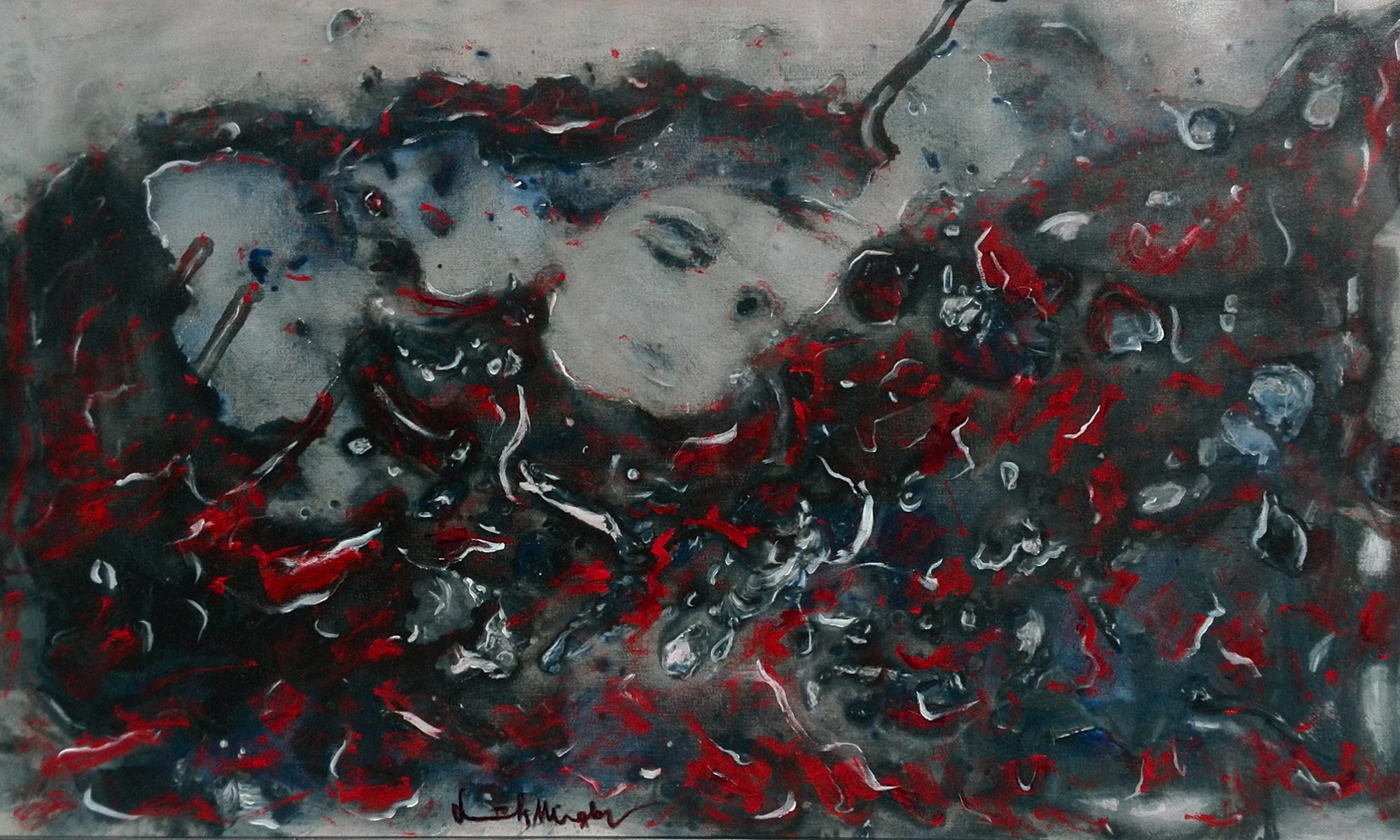Miroslav Šumnik’s opus can be divided into different periods thematically and formally. His desire for public appearance has smouldered in author since early years. He has learnt the skills of painting at different courses, by visiting foreign galleries and museums and participating at group exhibitions. At his first solo exhibition in 80ties he presented himself with rather unique interpretation of figurative and landscape images typical for that period of his work. The nudes, the images of horses and the landscape paintings with special emphasis upon rural architecture (hay-racks, water-mills) were at the forefront of his creativeness. Šumnik has chosen a highly demanding pastel technique. And as a skilled painter he is rewarded for his work by unique effects: soft and lyrically sounded colour layers as well as impression of interplay and transparency of colours.
Šumnik, in relation to mentioned set of motifs, has not decided for consistent realistic illustration of motifs but for summarizing the capture and the interpretation of mood which are revealed in unique light colour scale. Also the demonstration of unusual atmospheric effects stands out in landscape painting. It is interesting that Šumnik has chosen similar use of colours and mixtures with white colour for nudes and horse compositions which reduce even the greatest contrasts. Šumnik’s colour palette has lyric characteristics.
We could say the same for Šumnik’s attitude towards painting respectively the assessment of nudes. The motifs include, as a rule, evident erotic undertone which is emphasized by the painter’s explicit attitude towards woman’s body whereas faces are not drawn and are covered with hair or light colour layers. Due to the position of a body in motion or different views, a body can also be moved out of sight.
Nevertheless, the erotic component is always related to decent art emphases, for example, blurred silhouettes and fictive veils embracing the bodies. We can also note the symbolic undertone with figurative motifs the same as with the isolated witnesses of former rural architecture.
Šumnik’s landscape motifs from the latest period show a new context and interpretation. Šumnik has replaced stylization of individual elements of landscape with the reduction of materialistic world respectively with deliberate ignorance of all evident narrative components.
Instead of a view into the chosen landscape fragment and precise recording of its characteristics, we deal with its colour image and basic impression. Only the choice of colours and tiny art hints like signs, sets of colours, relief structures and other art interpretations reveal that the paintings can still be classified into landscape field. But this time, the painter feels the landscape primarily as the Nature.
In this way the specific landscape motifs pass into universal. And as the painter says: ‘I wish people would feel connected to the nature and realize the nonsense of destroying our planet. – Awareness and observation of every moment can offer the entrance into new reality of existence which will be light, happy and friendly to Mother Earth.’
According to the starting-point the new painting procedure shows an abstract character. But Šumnik can with deliberate placement of layers of colours create a feeling of special depth. The compositions created at first sight as displaced at random or as self-designed colour layers and forms have special structure. Art structures, which we cannot always determine whether they are there accidently or on purpose, are associated with the landscape ambient or the landscape morphology or even more specific starting-point: a blooming bush or field, a storm, a riverbed or a dark forest. The paintings force a viewer to use his own experience and imagination. In several compositions the dominant blue-greenish colour field with vivid shades points out the water element. At the same time the celestial pole of our environment is present inside. There is no doubt that such art approach or its result can be linked as well to a new ecological awareness, although in the forefront there is the painter’s relaxed transfer to the diversity of colours, colour layers, their spillover and reflection in the eyes of a viewer.
Šumnik systematically copes with various challenges. One is the sculpting of small statues out of bronze and other materials. He is like with his painting also with sculpting interested in composition, spatial relations and more or less realistic portrait drawings.
dr. Damir Globočnik,
Art Historian and Art Critic
